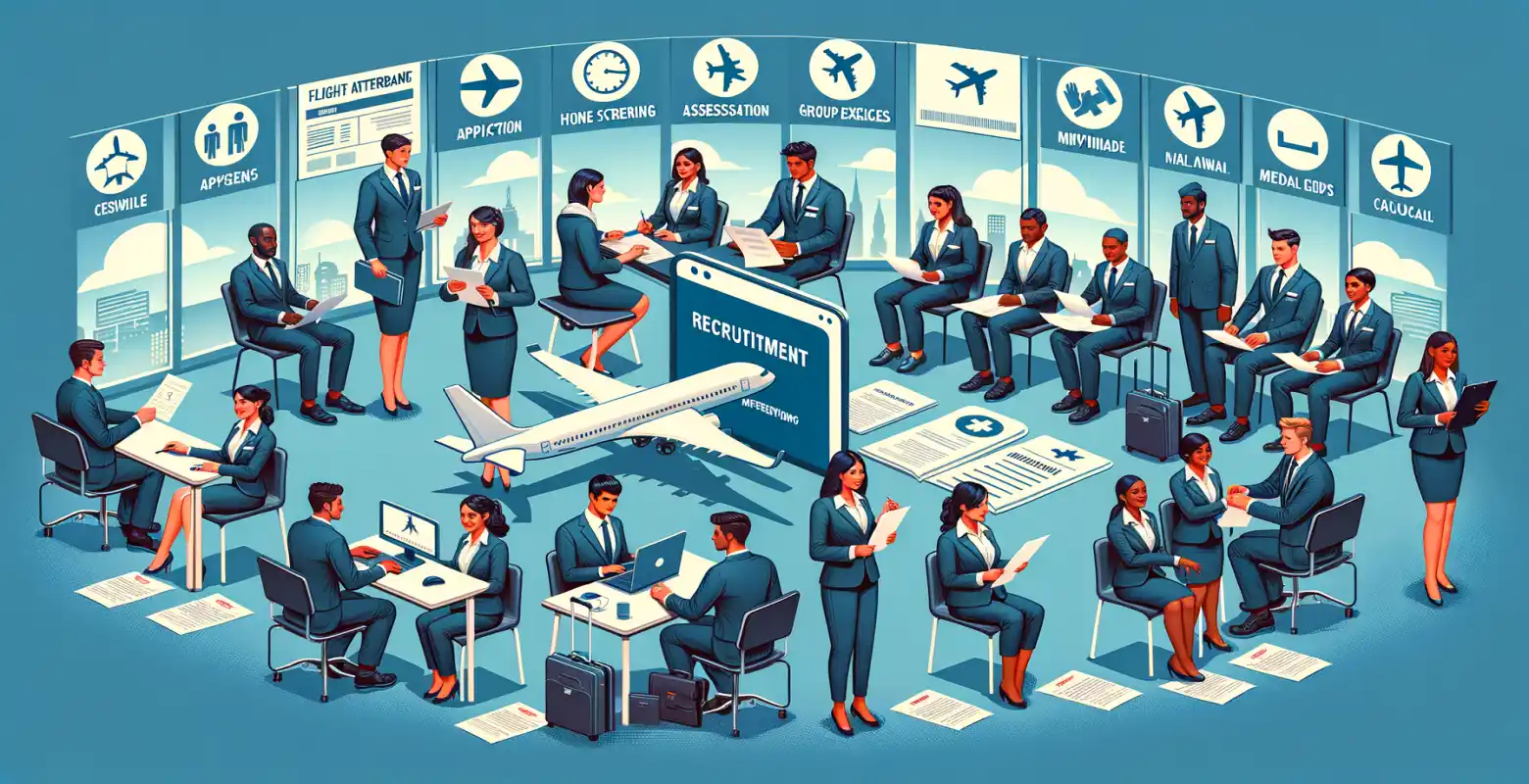What does the recruitment process for a steward/stewardess position look like?
Introduction
The recruitment process for the position of a steward or stewardess is a topic that is gaining popularity, especially in the context of the dynamically growing aviation market. Many people dream of working in the skies, but few realize what the path to obtaining this job looks like. In the era of globalization and increasing availability of air travel, there is a growing demand for qualified cabin crew. In this article, we will take a step-by-step look at the recruitment process for this prestigious position, discussing its various stages, requirements, and the challenges that candidates may face.
Initial Requirements
To apply for the position of a steward or stewardess, candidates must meet certain basic requirements. Most airlines require candidates to be at least 18 years old, although some airlines may prefer older individuals. It is also required to have a high school education, and often fluent knowledge of the English language. Many airlines also look for individuals who have additional language skills, which is a major asset in dealing with international passengers.
Application Stage
The first step in the recruitment process is submitting an application. Candidates must fill out an application form, which is usually found on the airline's website. This form includes detailed information about work experience, education, knowledge of foreign languages, and other qualifications. It is often also required to attach a current CV and a cover letter in which the candidate should explain why they are the right person for the job.
Qualification Interview
If the application passes the initial assessment positively, the candidate is invited to a qualification interview. This interview can take place in person or via video conference. During the recruitment interview, communication skills, teamwork abilities, and stress resistance are assessed. Recruiters often also conduct simulations of situations that may occur on board to see how the candidate performs in practice.
Psychological and Medical Tests
Working as a steward or stewardess requires not only proper interpersonal skills but also good physical and mental health. Therefore, candidates undergo a series of medical tests to assess their ability to work in the specific conditions onboard an aircraft. Psychological tests, in turn, are conducted to evaluate the ability to cope with stressful situations and make quick decisions.
Basic Training
After successfully passing the qualification interviews and tests, candidates are invited to intensive basic training, which usually lasts from a few weeks to several months. The training covers both theoretical and practical aspects of working onboard. Participants learn about safety regulations, evacuation procedures, and passenger handling. During the training, candidates also acquire skills in providing first aid and dealing with crisis situations.
Certification and Specializations
Upon completion of basic training, candidates must pass a final exam, which is a requirement for obtaining a certificate allowing them to work as cabin crew. Depending on the airline, specializations are also possible, such as VIP passenger service, knowledge of handling different types of aircraft, or the ability to work on long-haul routes. Certification is a key element that opens the doors to a career in the aviation industry.
Adaptation and Professional Development
Upon starting work onboard, new stewards and stewardesses must undergo an adaptation period during which they gain experience and learn about the specifics of the airline. As they gain experience, advancement to higher positions, such as senior steward or cabin manager, becomes possible. The aviation industry also offers numerous opportunities for professional development, including training courses to enhance qualifications.
Challenges and Benefits
Working as a steward or stewardess comes with many challenges, such as irregular working hours, long shifts, and the need to deal with various types of passengers. However, this job also offers numerous benefits, including the opportunity to travel the world, attractive remuneration, and social packages. For many people, the most significant benefit is the opportunity to work in a dynamic and international environment.
Trends and Future of the Profession
With the increasing number of passengers and technological advancements, the profession of a steward or stewardess is also evolving. Modern aircraft are equipped with advanced technologies, which require cabin crew to continuously improve their skills. Furthermore, with a greater focus on sustainable development, airlines are increasingly paying attention to environmental issues, which also affects the way cabin crew operate.
Summary
The recruitment process for the position of a steward or stewardess is demanding and consists of many stages aimed at selecting the best-prepared candidates. Despite the numerous challenges associated with this job, it also offers many benefits and opportunities for development. For those who dream of working in the skies, a career path in the aviation industry can be extremely rewarding. As the industry evolves, so will the requirements and expectations for cabin crew, presenting candidates with new challenges but also numerous opportunities.






Number of comments: 0